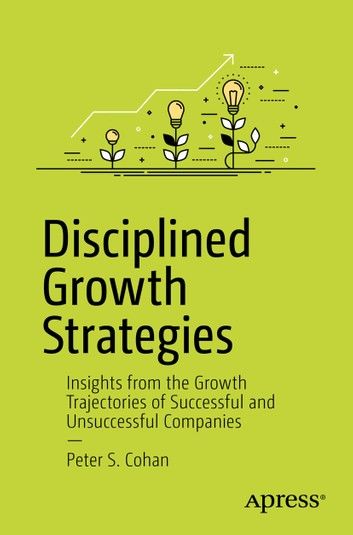| FindBook |
有 1 項符合
Disciplined Growth Strategies的圖書 |
 |
Disciplined Growth Strategies 作者:Peter S. Cohan 出版社:Apress 出版日期:2017-02-06 語言:英文 |
| 圖書選購 |
| 型式 | 價格 | 供應商 | 所屬目錄 | 電子書 |
$ 1767 |
企業家精神與小型企業 |
|---|
| 圖書館借閱 |
| 國家圖書館 | 全國圖書書目資訊網 | 國立公共資訊圖書館 | 電子書服務平台 | MetaCat 跨館整合查詢 |
| 臺北市立圖書館 | 新北市立圖書館 | 基隆市公共圖書館 | 桃園市立圖書館 | 新竹縣公共圖書館 |
| 苗栗縣立圖書館 | 臺中市立圖書館 | 彰化縣公共圖書館 | 南投縣文化局 | 雲林縣公共圖書館 |
| 嘉義縣圖書館 | 臺南市立圖書館 | 高雄市立圖書館 | 屏東縣公共圖書館 | 宜蘭縣公共圖書館 |
| 花蓮縣文化局 | 臺東縣文化處 |
|
|
Accelerate your company's growth in a disciplined fashion. This book provides leaders of large and small companies a proven comprehensive framework to think systematically about growth options and to yield practical strategies that produce faster growth.
Drawing insights from case studies of successful and unsuccessful companies, strategy teacher and venture capitalist Peter Cohan models his systematic approach to brainstorming, evaluating, and implementing growth strategies across five dimensions: Customers, Geography, Products, Capabilities, Culture. He examines each of these five growth dimensions in turn, selecting and organizing his cases to compare the growth strategies deployed successfully and unsuccessfully by large and small companies along the given dimension. In each of his five dimensional chapters, the author derives from his case analyses the key principles and processes for creating and achieving faster growth.
Professor Cohan draws on a network of hundreds of founders, CEOs, and investors developed through his decades of consulting, authorship of 11 books, and over five years as a Forbes columnist. He shows through many compelling stories how leaders craft effective growth strategies.
Business leaders will learn the following lessons from this book:
-
Achieving rapid but sustainable growth is a business leader’s most important responsibility – and leaders must approach this challenge with a mixture of vision, intellectual humility, and a willingness to experiment and learn from failure.
-
The growth challenges facing companies that are currently growing quickly differ from the ones that stagnating or shrinking companies must overcome.
-
Companies can achieve growth along one or more of the dimensions simultaneously – and they often expand geographically to customers in the same segments.
-
Useful insights can emerge from comparing case studies of successful and unsuccessful companies pursuing similar growth strategies.
-
Companies should select a growth strategy based on three factors: the attractiveness of the growth opportunity, the company’s capabilities to provide superior value to customers in the selected market, and the expected return on investment in the growth vector.
-
Companies should select a growth strategy that best fits their capabilities and culture and they must enhance both to adapt to new growth opportunities.
Who This Book Is For
The people in companies who are responsible for growth: chief executive officers, chief marketing officers, chief product officers, heads of business development, product managers, sales people, and human resources managers
|











